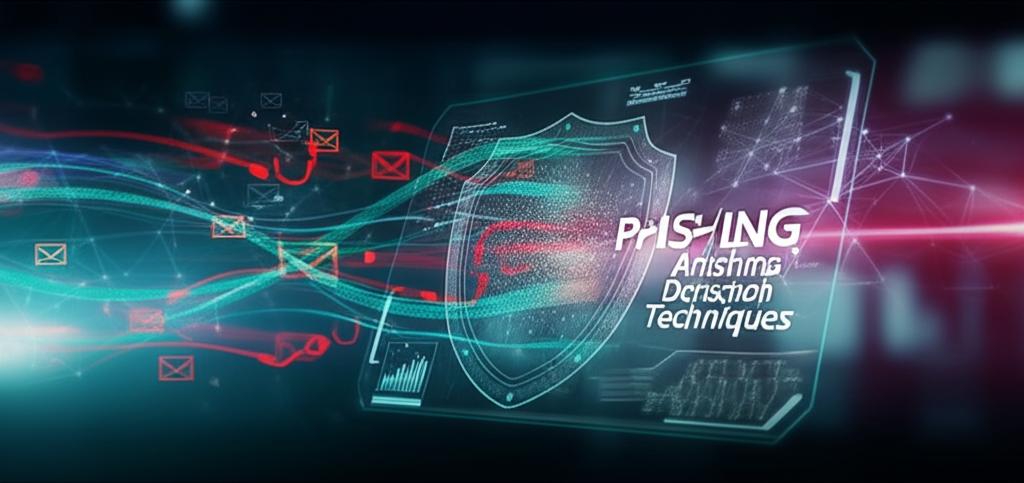Mastering Robust Phishing Detection Techniques: Safeguarding Your Digital Fortress
In the ever-evolving landscape of cyber threats, phishing remains one of the most pervasive and dangerous attack vectors. Cybercriminals constantly refine their tactics, making sophisticated phishing attempts harder to spot. For individuals and enterprises alike, understanding and implementing effective Phishing Detection Techniques is not just crucial—it’s imperative for digital survival. This guide delves into the multi-layered strategies and tools essential for identifying, preventing, and mitigating these insidious attacks.
The Escalating Threat of Phishing Attacks
Phishing attacks are a primary gateway for data breaches, ransomware infections, and financial fraud. They exploit human psychology, tricking users into revealing sensitive information or deploying malicious software. As attackers leverage AI for more convincing lures and bypass traditional security measures, the need for advanced Phishing Detection Techniques becomes more urgent than ever. Organizations must move beyond basic spam filters to adopt a comprehensive, proactive defense strategy.
Core Phishing Detection Techniques for Enhanced Security
1. Email Header and Content Analysis
The first line of defense often lies in scrutinizing email metadata and content. Robust Phishing Detection Techniques in this area include:
- Sender Reputation Check: Verifying the sender’s IP address and domain against known blacklists and reputation scores.
- Email Authentication Protocols: Implementing and enforcing SPF, DKIM, and DMARC to validate sender authenticity and prevent email spoofing.
- Content Scrutiny: Analyzing email body for common phishing indicators such as suspicious links, unusual grammar or spelling, urgent or threatening language, and requests for sensitive information. AI-powered tools can detect subtle linguistic cues.
2. URL and Domain Analysis
Malicious URLs are a hallmark of phishing. Effective Phishing Detection Techniques for URLs include:
- Typo-squatting and Homograph Detection: Identifying domains that mimic legitimate ones through subtle misspellings or internationalized domain name (IDN) tricks.
- URL Redirection Tracing: Following shortened or obfuscated URLs to their final destination to check for malicious content or suspicious domains.
- Domain Age and Registration: Newer domains, especially those registered through privacy services, can be red flags.
- Threat Intelligence Feeds: Cross-referencing URLs against constantly updated databases of known malicious websites.
3. Behavioral and Anomaly Detection
Modern Phishing Detection Techniques leverage behavioral analytics to spot unusual patterns:
- User Behavior Profiling: Establishing baselines for normal user activity (e.g., login times, locations, access patterns) and flagging deviations.
- Login Anomaly Detection: Alerting on multiple failed login attempts, logins from unusual geographical locations, or attempts to access systems with compromised credentials.
- Internal Phishing Detection: Monitoring internal email traffic for signs of compromised accounts being used for internal phishing attempts.
4. Machine Learning and Artificial Intelligence (AI)
AI and ML are transforming Phishing Detection Techniques by enabling systems to learn and adapt:
- Pattern Recognition: ML algorithms can identify complex patterns across vast datasets that indicate phishing, far beyond what rule-based systems can achieve.
- Predictive Analysis: AI can predict the likelihood of a new email being a phishing attempt based on features learned from millions of past examples, including zero-day phishing variants.
- Natural Language Processing (NLP): Used to analyze email text and detect subtle cues of social engineering, urgency, or impersonation.
5. User Education and Awareness Programs
Even the most advanced technological defenses can be bypassed if users aren’t vigilant. Human vigilance is a critical component of successful anti-phishing strategies:
- Regular Training: Educating employees on how to recognize phishing emails, report suspicious activity, and understand the consequences of falling victim.
- Simulated Phishing Attacks: Conducting internal phishing campaigns to test employee resilience and provide targeted training where weaknesses are identified.
- Clear Reporting Mechanisms: Ensuring users know exactly how and where to report suspicious emails without hesitation.
Implementing a Multi-Layered Phishing Defense Strategy
An effective defense against phishing requires a combination of these techniques. Organizations should implement a layered security approach that includes:
- Robust email gateway security with advanced threat protection.
- Endpoint detection and response (EDR) solutions to catch post-delivery threats.
- Web filters and secure DNS services to block access to malicious sites.
- Ongoing security awareness training for all personnel.
- Incident response plans specifically for phishing attacks.
The Future of Phishing Detection
As phishing tactics become more sophisticated, so too will Phishing Detection Techniques. We can expect further advancements in AI-driven behavioral analysis, real-time threat intelligence sharing, and integrated security platforms that provide a holistic view of potential threats. Staying ahead requires continuous adaptation and investment in cutting-edge technology and human intelligence.
By adopting these comprehensive Phishing Detection Techniques, organizations can significantly reduce their risk exposure and build a resilient defense against the relentless tide of cyber-attacks, safeguarding their valuable data and reputation.







